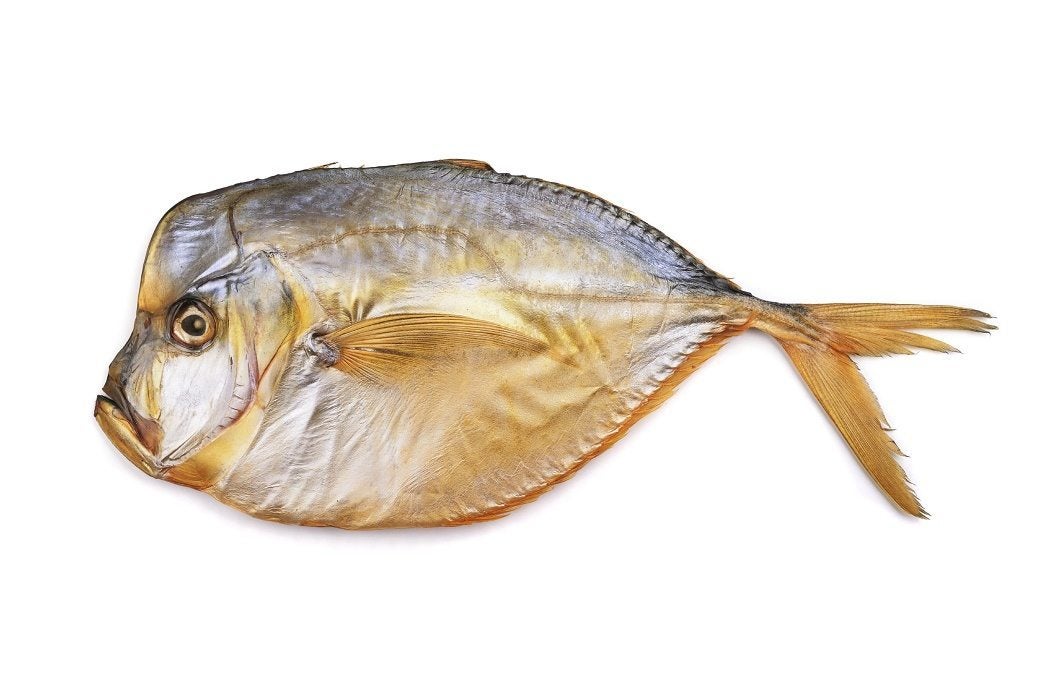Cold fish? Not this time. Scientists have discovered that the opah fish (Lampris guttatus) is actually warm-blooded.
Unlike the majority of fish, which maintain a body temperature in line with their watery surroundings and can only be warm when the surrounding water is warm, the opah fish is truly endothermic and can stay warm in all water temperatures.
The opah accomplishes this feat through a system of heat exchanging blood vessels in the gills, where warmer core blood helps heat up cold oxygenated blood from the gills. In this way it can maintain a body temperature a few degrees above that of the surrounding water. This is a remarkable adaptation, but fish have been around a long time without it. Why do opah need this ability?
Opah fish, or moonfish, are very large, growing up to 1200 pounds and up to a length of six feet, although they are typically a bit smaller. They can be found globally, in temperate and tropical waters. Opah feed in deep water, down to 500 meters, and until recently it was quite unusual to encounter one—the landing of a small opah near Boston in 1925 was enough to warrant publication in a journal.
A simpler form of heat exchange is found in several fast, shallower-living predators such as tuna and mako sharks. The exchange system consists of parallel blood vessels, some carrying cool blood from the gills and others carrying warmer blood from the core. This system is located deep inside the body, near the powerful muscles that propel these fish at great speeds.
As in the opah fish, it’s a counter-current heat exchange, where warmer core blood passes in the opposite direction from gill blood, transferring warmth to the incoming blood from the gills (which is basically the water temperature). The warmed blood flows to the deep red swimming muscles, allowing a higher rate of muscle function.
Accordingly, the muscles remain the warmest, while other areas, such as the viscera, gradually cool off and the fish will eventually become sluggish if they spend too much time in very cold water. Tuna and mako sharks need to return to warmer surface waters in order to maintain high muscle temperatures.
Not so the opah fish. By locating the heat exchange system directly in the gills, the opah maintains a moderately higher temperature throughout its body, rather than just extremely warm muscles. Where the tuna and mako use the warmth for pure speed, the opah uses its warmth to remain active even in the cold depths, an advantage over the cold and sluggish predators of the deep. What is lost in speed is gained in generally higher functioning in the cold. So long as you can beat the competition, who needs super speed?







